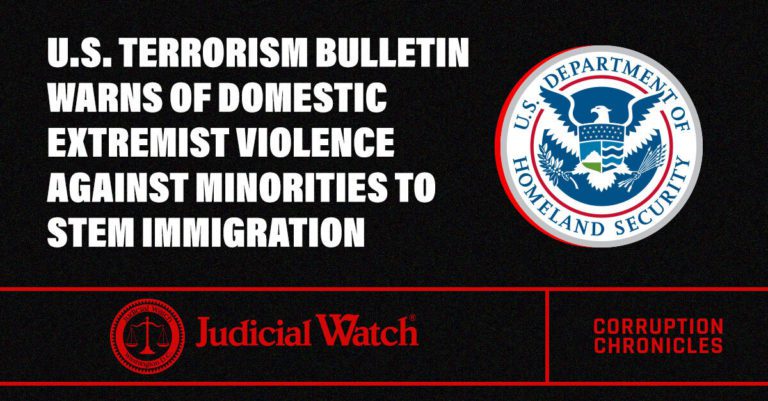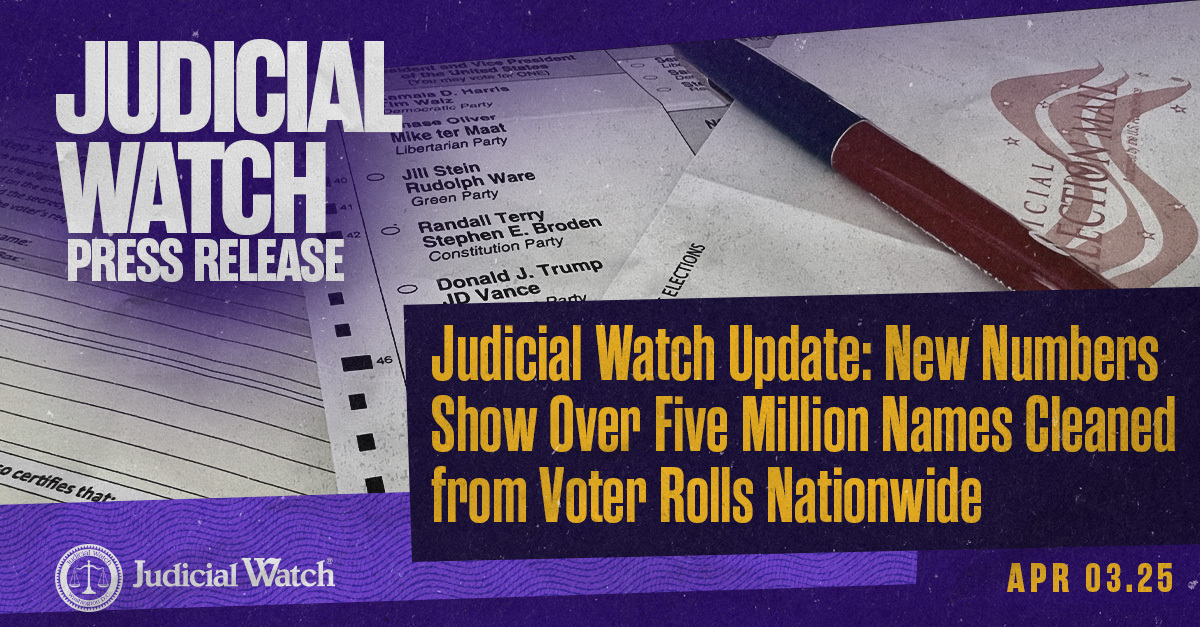
U.S. Terrorism Bulletin Warns of Domestic Extremist Violence Against Minorities to Stem Immigration

A new Department of Homeland Security (DHS) bulletin warning of a “heightened threat environment” claims domestic violent extremists have expressed grievances related to their perception that the U.S. government is unwilling or unable to secure the U.S.-Mexico border. Therefore, the dispatch says, the domestic extremists “have called for violence to stem the flow of undocumented migrants to the United States.” Issued by the agency’s National Terrorism Advisory System, the notice goes on to say that there “is increased risk of domestic violent extremists using changes in border security-related policies and/or enforcement mechanisms to justify violence against individuals, such as minorities and law enforcement officials involved in the enforcement of border security.”
The document lists other threats as well but fails to reveal where the information, or intelligence, comes from. Judicial Watch has launched an investigation to uncover records that formed the foundation for the decision to issue the warning as well as the records that substantiate the warning. Within hours of the bulletin’s release, Judicial Watch filed a Freedom of Information Act (FOIA) request with DHS for the files that could provide some answers. Not surprisingly, the new terrorism advisory promotes the agency’s controversial misinformation campaign, which was technically suspended after major backlash over government overreach. A DHS panel known as the Disinformation Governance Board was supposed to combat disinformation and, though it was officially dismantled and its director resigned, the message remains. “The continued proliferation of false or misleading narratives regarding current events could reinforce existing personal grievances or ideologies, and in combination with other factors, could inspire individuals to mobilize to violence,” this week’s terrorism advisory states.
The three-page bulletin also warns about abortion and election-related violence. It says that those in favor of and opposed to abortion rights have encouraged violence against government, religious and reproductive healthcare personnel and facilities as well as those with opposing ideologies. “As the United States enters mid-term election season this year, we assess that calls for violence by domestic violent extremists directed at democratic institutions, political candidates, party offices, election events, and election workers will likely increase,” DHS states, adding that it expects the “threat environment to become more dynamic as several high-profile events could be exploited to justify acts of violence against a range of possible targets.” The targets could include public gatherings, faith-based institutions, schools racial and religious minorities, government facilities and personnel, U.S critical infrastructure, the media, and perceived ideological opponents.
“Threat actors have recently mobilized to violence due to factors such as personal grievances, reactions to current events, and adherence to violent extremist ideologies, including racially or ethnically motivated or anti-government/antiauthority violent extremism,” according to the DHS terrorism bulletin. “Foreign adversaries—including terrorist organizations and nation state adversaries—also remain intent on exploiting the threat environment to promote or inspire violence, sow discord, or undermine U.S. democratic institutions.” DHS discloses that the primary threat of mass casualty violence in the U.S. stems from lone offenders and small groups motivated by a range of ideological beliefs and/or personal grievances.
The agency created after 9/11 to safeguard America, writes that it is responding to the threats by collaborating with partners across every level of government, the private sector and in local communities. Some of the so-called partnerships—such as information sharing with the Federal Bureau of Investigation (FBI)—make sense but others appear questionable. For instance, DHS lists a Nonprofit Security Grant Program that provided over $250 million in funding to support “target hardening and other physical security enhancements to non-profit organizations at high risk of terrorist attack.” The agency also spent at least $77 million on preventing, preparing for, protecting against, and responding to threats via a special Homeland Security Grant Program. DHS’s Center for Prevention Programs and Partnerships awarded about $20 million to train and educate “stakeholders” on how to identify indicators of radicalization to violence, where to seek help and the resources that are available to prevent targeted violence and terrorism. Judicial Watch is investigating what exactly these programs do with our taxpayer dollars and how the partnerships function.
















